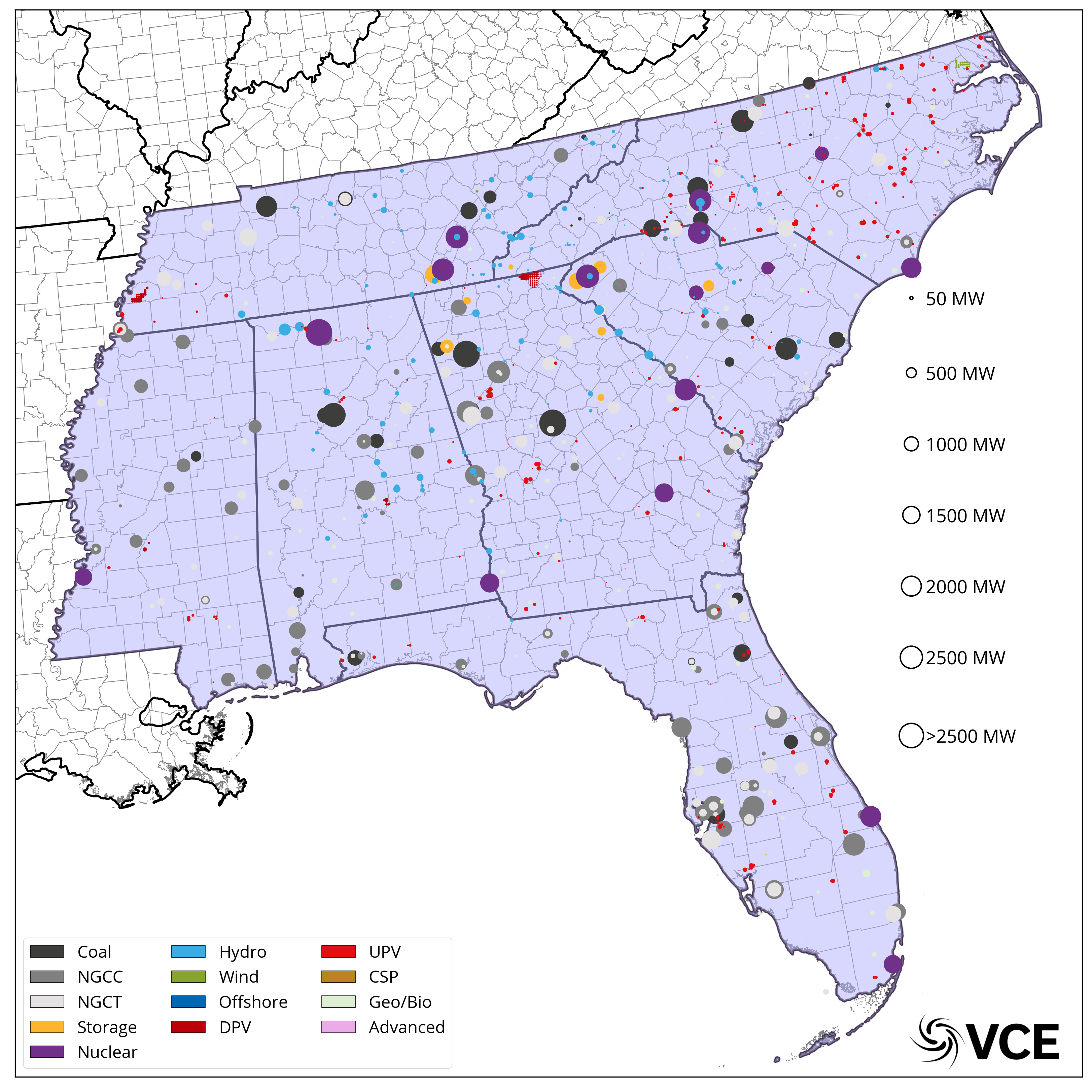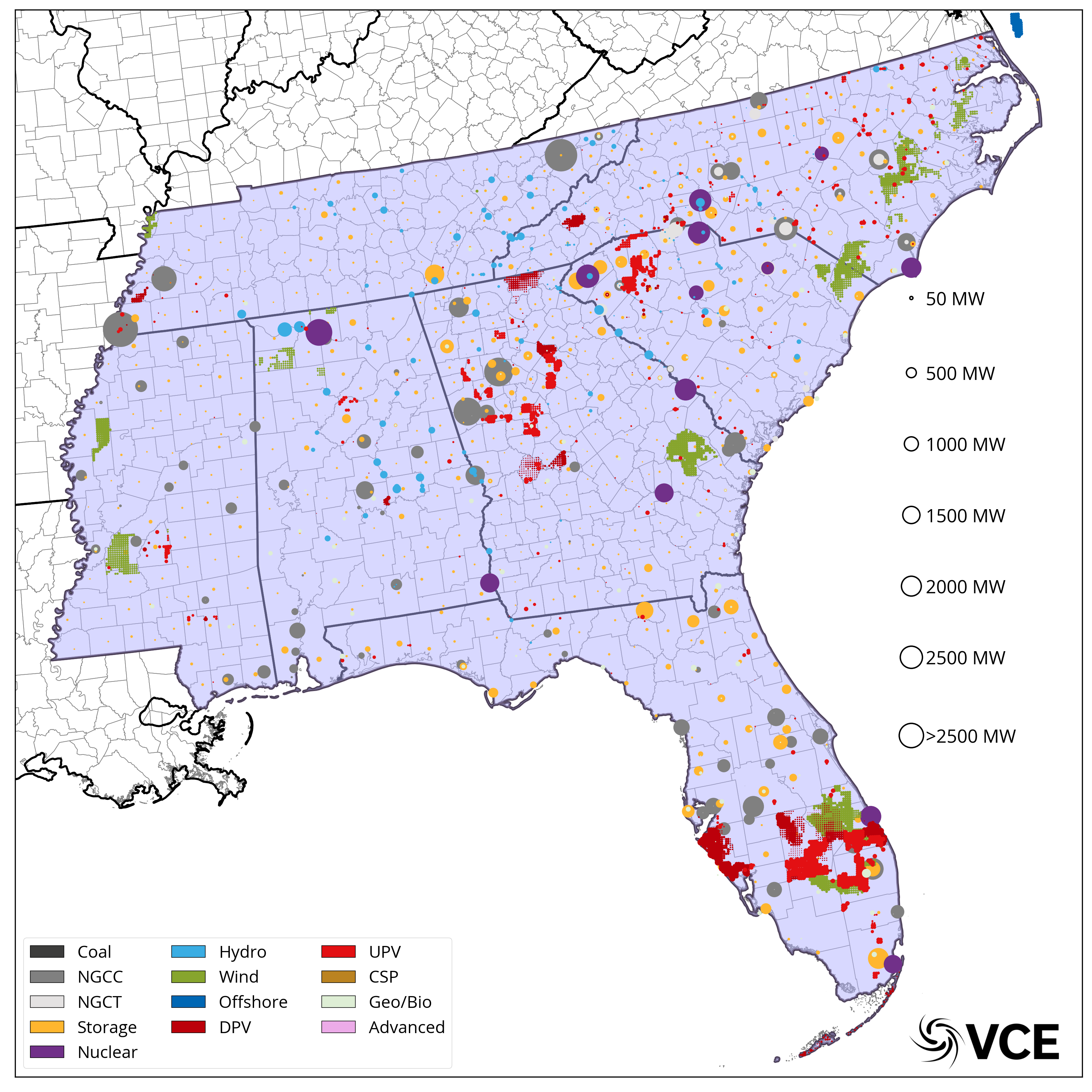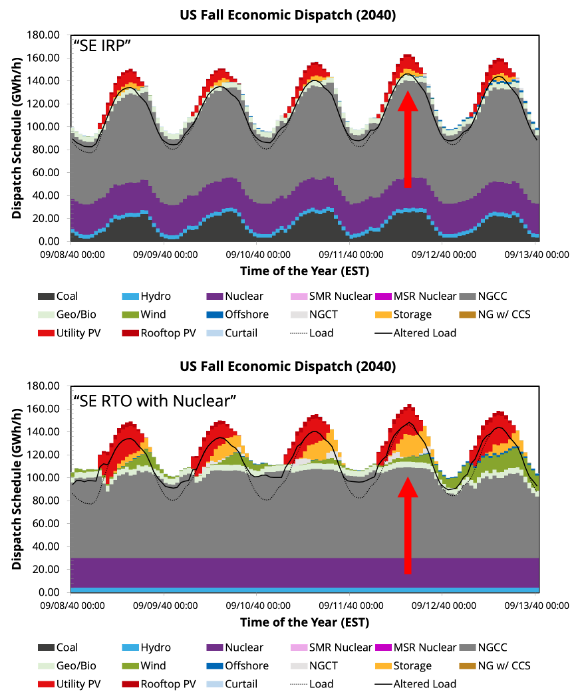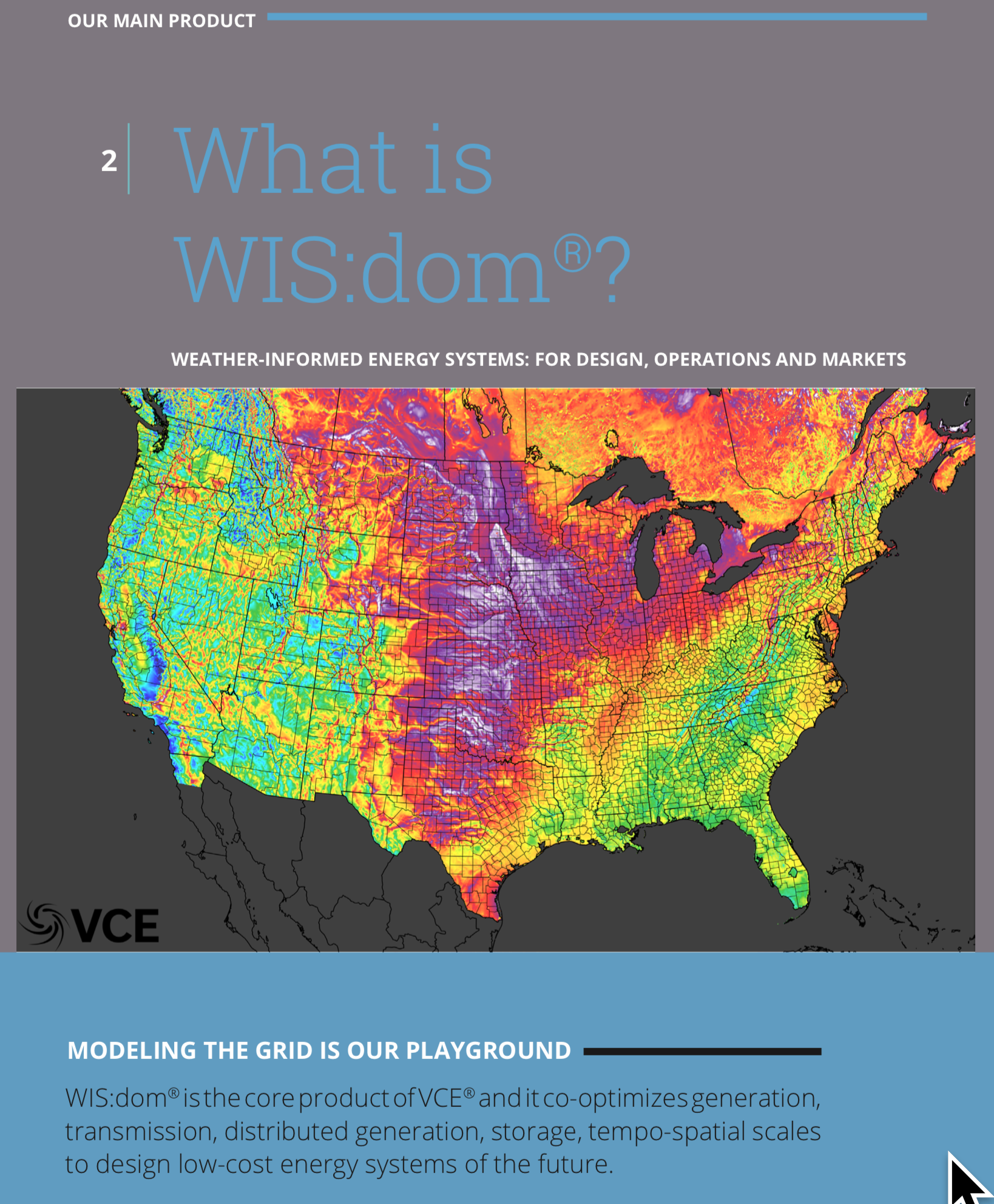Vibrant Clean Energy (VCE®) partnered with Energy Innovations to study the potential impact of a regional transmission organization (RTO) for the Southeastern United States (SE-RTO).
The modeling (using WIS:dom®-P) found that with an RTO the region could save $384 billion by 2040, create 285,000 full time jobs, reduce emissions by 37% and provide transparency in the region.
The team modeled four scenarios. Importantly, the first scenario mimicked the utilities’ integrated resource plans (IRPs) and found that an increase in thermal generation exceeded requirements and inflated costs. Conversely, the SE-RTO scenario reduced the dependency on thermal generation and shifted to low-cost variable generation.
One of the sensitivity scenarios studied an alternative IRP, which allowed for competitive build out and economic dispatch. This scenario produced approximately 60% of the savings of the SE-RTO. Finally, a fourth scenario determined the benefit of an SE-RTO when nuclear power plants remained online through 2040. This scenario was very slightly more expensive than the SE-RTO scenario, but had far fewer emissions.
Interestingly wind power, in the modeling, became an important contribution to the electricity mix. With it increasingly providing capacity requirements for winter demand profiles. Further, the modeling found that distributed energy resources (DERs) and their co-optimization provided 10% of the system savings.
All input and output data are available, as are the reports and summary spreadsheets. Find them here:
See below for some visualizations from the reports.






